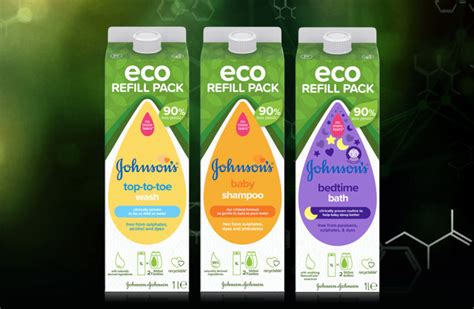The world is facing an unprecedented crisis, with the consequences of human actions on the environment becoming increasingly evident. One of the primary contributors to this issue is the production, distribution, and disposal of consumer products. The current linear economy model, which is based on a "take, make, dispose" approach, has led to staggering levels of waste and pollution. However, a new revolution is emerging, one that promises to transform the way we produce, consume, and dispose of products: the refill tech revolution.
What is Refill Tech?
Refill tech is an innovative approach that seeks to reduce waste and promote sustainability in the consumer products industry. It involves the use of technology to create closed-loop systems, where products are designed to be reused, recycled, or biodegradable. This approach challenges the traditional linear economy model by promoting a circular economy, where materials are kept in use for as long as possible, and waste is minimized.

Key Benefits of Refill Tech
The refill tech revolution offers numerous benefits for consumers, businesses, and the environment. Some of the key advantages include:
- Reduced waste: By designing products for reuse and recycling, refill tech can significantly reduce the amount of waste generated by consumer products.
- Cost savings: Refill tech can help businesses reduce their production and disposal costs, which can lead to cost savings for consumers.
- Increased sustainability: Refill tech promotes the use of sustainable materials, reduces energy consumption, and minimizes pollution.
- Improved customer experience: Refill tech can provide customers with a more convenient and personalized experience, as they can easily refill or replace products.
How Refill Tech Works
Refill tech involves the use of various technologies to create closed-loop systems. Some of the key technologies used in refill tech include:
- Internet of Things (IoT): IoT sensors and devices can be used to track product usage, detect when a product needs to be refilled or replaced, and optimize the refill process.
- Artificial intelligence (AI): AI can be used to analyze customer behavior, predict demand, and optimize the refill process.
- Blockchain: Blockchain technology can be used to create secure and transparent supply chains, ensuring that products are authentic and sustainable.
- Smart packaging: Smart packaging can be used to track product usage, detect when a product needs to be refilled or replaced, and provide customers with personalized recommendations.

Examples of Refill Tech in Action
Refill tech is already being used in various industries, including:
- Beverage industry: Companies like Coca-Cola and PepsiCo are using refill tech to reduce waste and promote sustainability.
- Personal care industry: Companies like L'Oréal and Unilever are using refill tech to create sustainable packaging and reduce waste.
- Food industry: Companies like Kraft Heinz and Nestle are using refill tech to reduce packaging waste and promote sustainability.
Challenges and Opportunities
While refill tech offers numerous benefits, there are also challenges that need to be addressed. Some of the key challenges include:
- Infrastructure: Refill tech requires significant investment in infrastructure, including IoT sensors, AI systems, and smart packaging.
- Consumer behavior: Refill tech requires changes in consumer behavior, including a willingness to adopt new technologies and practices.
- Regulatory framework: Refill tech requires a supportive regulatory framework, including policies and regulations that promote sustainability and reduce waste.

Conclusion
The refill tech revolution has the potential to transform the consumer products industry, reducing waste and promoting sustainability. While there are challenges to be addressed, the benefits of refill tech are clear. As consumers, businesses, and governments, we must work together to promote the adoption of refill tech and create a more sustainable future.



What is refill tech?
+Refill tech is an innovative approach that seeks to reduce waste and promote sustainability in the consumer products industry.
How does refill tech work?
+Refill tech involves the use of various technologies, including IoT, AI, blockchain, and smart packaging, to create closed-loop systems.
What are the benefits of refill tech?
+The benefits of refill tech include reduced waste, cost savings, increased sustainability, and improved customer experience.
